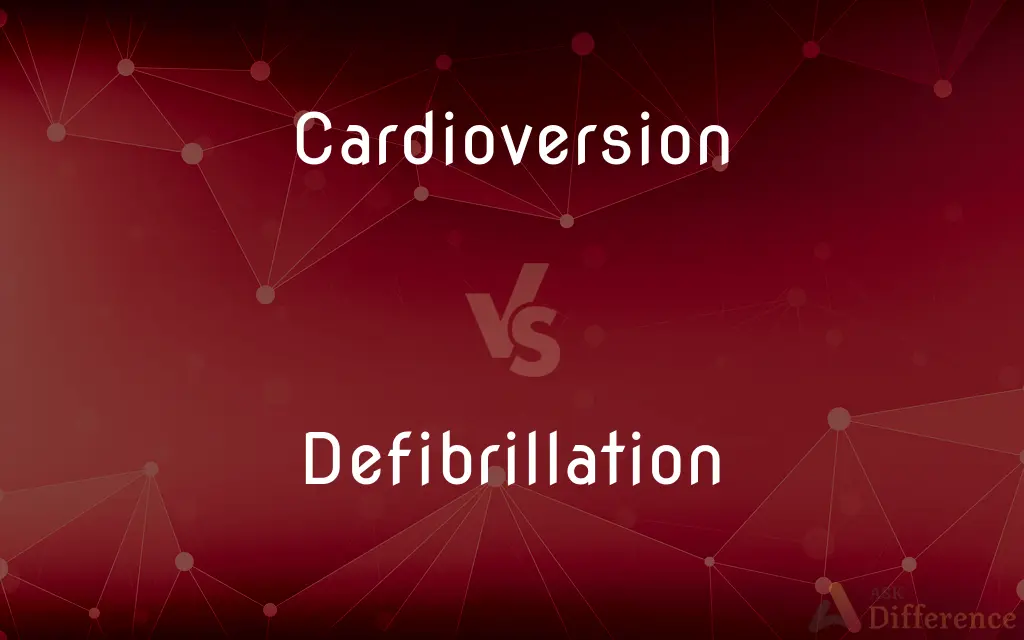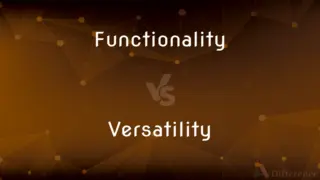Cardioversion vs. Defibrillation — What's the Difference?

Difference Between Cardioversion and Defibrillation
ADVERTISEMENT
Compare with Definitions
Cardioversion
Cardioversion is a medical procedure by which an abnormally fast heart rate (tachycardia) or other cardiac arrhythmia is converted to a normal rhythm using electricity or drugs. Synchronized electrical cardioversion uses a therapeutic dose of electric current to the heart at a specific moment in the cardiac cycle, restoring the activity of the electrical conduction system of the heart.
Defibrillation
Defibrillation is a treatment for life-threatening cardiac dysrhythmias, specifically ventricular fibrillation (VF) and non-perfusing ventricular tachycardia (VT). A defibrillator delivers a dose of electric current (often called a counter-shock) to the heart.
Cardioversion
The restoration of the heartbeat to normal functioning by the application of electrical shock or by the use of medication.
Defibrillation
To stop the fibrillation of (a heart) and restore normal contractions through the use of drugs or an electric shock.
Cardioversion
The treatment of cardiac arrhythmia, either with medication or by use of a machine (a cardioverter) that delivers a controlled electric current.
ADVERTISEMENT
Defibrillation
The stopping of the fibrillation of the heart in order to restore normal contractions, especially by the use of an electric shock.
Defibrillation
Treatment by stopping fibrillation of heart muscles (usually by electric shock delivered by a defibrillator)
Share Your Discovery

Previous Comparison
Functionality vs. Versatility
Next Comparison
Ogre vs. Monster













































